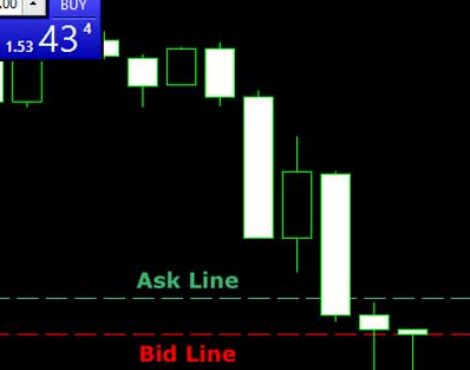In the fast-paced world of Forex and cryptocurrency trading, staying ahead of the game can mean the difference between success and failure. One way to gain an edge in the market is by using trading signals, which are essentially indicators that suggest when to enter or exit a trade. In this article, we will explore how to effectively use Forex and crypto trading signals to improve your trading strategy.
Understanding Forex and Crypto Trading Signals

Trading signals are essentially recommendations generated by algorithms or expert traders that analyze market data to identify potential trading opportunities. These signals can be based on technical analysis, fundamental analysis, or a combination of both. By following these signals, traders can make more informed decisions and potentially increase their profitability. Forex signals are generally geared towards trading currency pairs, while crypto signals are focused on trading digital currencies like Bitcoin and Ethereum.
Choosing the Right Trading Signal Provider

With an abundance of trading signal providers available online, it can be overwhelming to choose the right one. When selecting a trading signal provider, it’s essential to consider factors such as reputation, accuracy of signals, pricing, and customer support. Look for providers with a proven track record of success and transparent communication about their signals. Additionally, consider whether the signals provided align with your trading goals and risk tolerance.
Setting Up Your Trading Account

Once you have chosen a trading signal provider, the next step is to set up a trading account with a broker that allows you to execute trades based on signals. Make sure to choose a reputable broker with competitive spreads and reliable trade execution. Some brokers even offer the option to automatically execute trades based on signals, which can save time and minimize human error. Fund your trading account with an amount you are comfortable risking, and ensure you have a solid risk management strategy in place.
Interpreting Forex and Crypto Signals

When you receive a trading signal, it’s crucial to understand the rationale behind it and how it fits into your overall trading strategy. Take the time to analyze the signal and consider factors such as market trends, support and resistance levels, and key technical indicators. If you are unsure about the signal, seek clarification from the signal provider or consult with other traders in online forums or communities. Remember that not all signals will be winners, so it’s important to manage your expectations and remain disciplined in your trading approach.
Implementing Trades Based on Signals

Once you have analyzed a trading signal and are comfortable with its validity, it’s time to implement the trade. Enter the trade using your chosen trading platform, and set up stop-loss and take-profit orders to manage your risk and potential profits. Keep in mind that market conditions can change rapidly, so be prepared to adjust your positions based on new information or market developments. Regularly monitor your trades and be prepared to act quickly if the market moves against you.
Monitoring and Adjusting Your Trading Strategy

As you gain experience using trading signals, it’s important to continually monitor and evaluate your trading strategy. Keep track of your trades, analyze your performance, and identify areas for improvement. Consider adjusting your risk management strategy, refining your entry and exit signals, or diversifying your trading portfolio to reduce risk. By staying proactive and adaptive in your approach to trading signals, you can increase your chances of long-term success in the Forex and cryptocurrency markets.
Comparison Table: Forex vs. Crypto Trading Signals
| Aspect | Forex Trading Signals | Crypto Trading Signals |
|---|---|---|
| Market Focus | Currency pairs | Digital currencies |
| Volatility | Moderate | High |
| Liquidity | High | Varies depending on coin |
| Timeframe | Typically shorter-term | Can be shorter or longer-term |
| Regulatory Environment | More established and regulated | Less regulation and more prone to manipulation |
In conclusion, trading signals can be a valuable tool for traders looking to enhance their trading strategy and make more informed decisions in the Forex and cryptocurrency markets. By understanding how to choose the right signal provider, interpret signals effectively, and implement trades with discipline, you can increase your chances of success in the competitive world of trading. Remember that trading signals are just one aspect of a comprehensive trading strategy, and it’s essential to combine them with solid risk management practices and continuous learning to achieve your financial goals.




The part about considering market trends and support levels is very helpful.
Monitoring and adjusting strategy is key. Thanks for highlighting it!
Clear explanation on setting up a trading account. Good read for beginners.
‘Interpreting signals’ section really helped me understand better.
Informative post, especially about the risk management strategy.
Great info on trading signals. Helps to know how to choose the right provider!
Glad to know how to choose a reputable broker!
Interesting comparison between Forex and Crypto signals. Very useful!
Good advice on managing expectations with trading signals.
I didn’t know about automatic trades based on signals. Thanks for the tip!